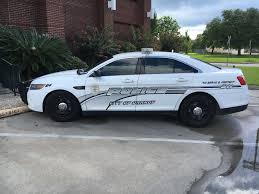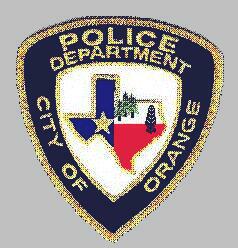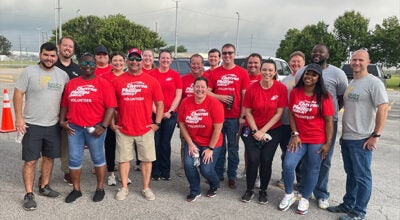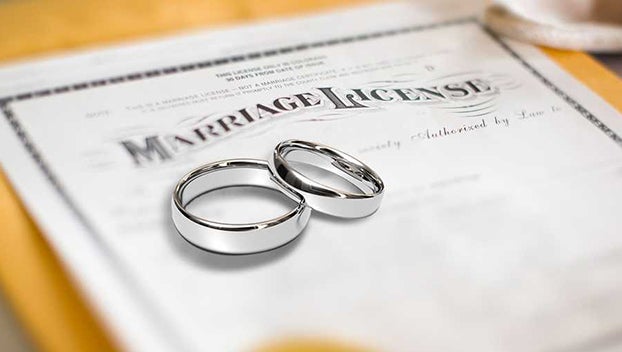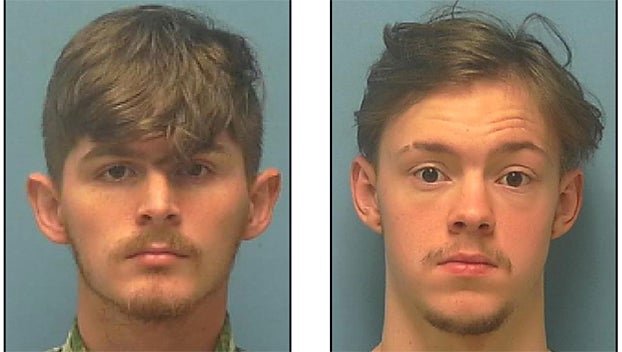What Made Orange Great: The first century of the Orange Police Department
Published 5:00 am Wednesday, January 5, 2022
|
Getting your Trinity Audio player ready...
|
By Mike Louviere
The first mention of an “official” police department in Orange was in 1890. A mention in city commission minutes stated that “H Stark was city marshall and E.M. Davis was night watchman, replacing L. Ferguson who resigned.”
At that time the city marshall was the chief law enforcement officer. It was an elected position and the marshall answered directly to the mayor and city commission. He worked mostly alone and was paid about $40 per month.
In 1914, a new city charter abolished the position of city marshall. In August 1914, J.T. Carter became the first chief of police. He was paid $125 per month and worked with the county sheriff’s office and county constables.
The police department was housed in the building at Fourth and Main Streets that also housed the city hall and fire department. In May 1944, the city began to move into the new city hall on Green Avenue. By September, the two story brick garage at the rear of the city hall had been remodeled into the police station. The upper floor was the city jail, and the lower floor housed the police department. This was to be the home of the Orange Police department for the next 30 years.
In 1952, there were 28 employees in nine classifications in the department. They were Chief, Assistant Chief, 18 Patrolmen, three radio operators, one “Fingerprint Man, one Clerk, one Mechanic, the City Judge, and a “Poundman.”
In July 1956, a contract was awarded to a local contractor for $14,480 to construct an extension for the police building. The building was enlarged to provide more office space. It would add room for a Corporate Court, patrol room, squad room, fingerprint and photography room, darkroom, Identification Bureau, and a business room.
The first motorcycles for the department were purchased for the department in 1944. Motorcycles were a part of the department for the next 20 years.
Motorcycle officers at first, did not have boots or helmets. In December 1958, the city council authorized bids for “police uniforms, motorcycle boots and crash helmets.” The cost of these items was $3000.
By the early 1960s, motorcycles were being phased out, though they continued to serve until 1966. In 1966, two surplus motorcycles were sold for $226.50.
As early as 1918, the city authorized the purchase of an automobile for the police traffic officer. In 1919, the city council set an allowance of “four gallons of gas and one quart of cylinder oil” to be paid by the city each week to the night police officer. At that time the night officer used his personal vehicle for police service.
In 1941, the city provided specifications for “one five passenger, four door automobile, Standard equipment, 85 to 110 horsepower, two police spotlights, free wheeling siren blinker, color black.” Prior to 1960, there were no white patrol cars, they were either black or black and white.
In 1960, the city accepted a bid from Modern Chevrolet for five 1961 white Chevrolet Biscayne automobiles. The total bid, with trade ins totaled $7,755. These were the first white patrol cars for the police department.
In 1968, when the city considered specifications for new patrol cars, for the first time air conditioning was considered. Prior to 1970, the cars had standard transmissions. In 1971, the department shifted to automatic transmissions.
The Orange Police Department had been buying gasoline from Orange service stations. In May 1955, the mayor called an emergency city council meeting to discuss a petition signed by several service station owners who complained that police department was not fairly distributing business among all Orange service stations.
In 1969, the city council passed an ordinance to allow the installation of gasoline e tanks on city property. A gasoline island was installed on the west side of the police building.
Early information about the radio system is sparse. There is no record of when the first system was installed, but there is a mention in the minutes the city council meeting held in August 1946 that “Ruby White, radio operator has retired.”
In September 1950, the mayor authorized the purchase of a large generator and radio in the new patrol car. The car was a new 1950 Ford Deluxe Tudor with an eight cylinder engine. The cost of the car was $1647, the radio cost $600.
On February 15, 1952, the City of Orange ratified an agreement with Orange County to maintain, at the city’s expense, a complete police radio communication system to be used by all law enforcements in the county. Orange County would adhere to a fee schedule for other agencies to pay a portion of the cost set in a four year contract.
In 1959, the Federal Civilian Defense Authority recommended that city police departments upgrade their radio equipment to a higher frequency. The FCDA would pay 50% of the cost to upgrade the system. The cost of the upgrade was $8,075. Radios for motorcycles were not included in the upgrade.
In the early years when city power was lost, the police department lost radio communication. In April 1958, the city awarded a contract to install an emergency generator at city hall. The installation cost was $3,758.
Thirteen school zones were established in Orange in September 1958.The districts were Curtis, Jones, Tilley, Colburn, Wallace, St. Theresa, St. Mary’s, Benjamin Franklin, Jonas Salk, Anderson, Stark and Carr, St. Mary’s High School, and St Paul’s School.
A formal traffic fine schedule for traffic violations was adopted in July 1957 by the city council. Drag racing and contesting speed would have the highest fines, $25. Failure to dim headlights would cost the offender $3. Fines for speeding would amount to $1 for each mile over the posted speed limit.
The structure of the police department changed in September 1959 when the council passed an ordinance eliminating the Detective position and combined it with that of Identification Officer. Other classifications at that time were, Chief, Assistant Chief, Captain, Patrolman First Class, Patrolman Second Class, Patrolman Third Class, Dispatcher, Poundmaster, and Steno-Clerk.
In December 1960 new radio equipment and electronic sirens were installed in five patrol cars. The Orange Police Department was the first in the area to begin using the new electronic sirens. The sirens mounted on the roof of the car and had several functions, one was to use as a public address system. The officers could now talk to persons outside their car and could also monitor radio transmissions when they were outside their patrol cars. A new base system was also installed along with the new radio equipment.
The department obtained new identification equipment in 1962. It included a fumigation kit to bring out old fingerprints, a special camera for photographing fingerprints, a field investigation kit, and an ultraviolet light.
The city council in November 1969 created new classifications in the department. They were Inspector, Captain Identification Officer, Sergeant, Patrolman, Poundmaster, Secretary, and Desk Officer Supervisor.
Also in 1969, the State of Texas began to set the standards for the certification of law enforcement officers in the State of Texas. It would now be necessary for police officers to become certified by the State of Texas to be members of the Orange Police Department.
By 1974, the station had become crowded and inefficient. A new building was needed. Specifications were put out for bid, but none of the bids were affordable for the city. An alternative solution was to buy the old First Savings and Loan Association building located near the city hall.
The building was purchased and remodeled and in 1976 it was ready to be occupied by the police department.
Until 1987, the cars purchased for patrol cars were nothing more than family cars with a larger alternator installed at the dealership. In October 1987, the department ordered the first cars with a complete police package. The first truly police cars went into service.
The department had installed its first polygraph instrument in 1978. By 1994, it was outdated and needed replacement. The department was able to purchase a new computerized polygraph system. Later that year the first in-car camera systems were installed. They included audio and video recording capability.
The department was out growing the modified building they had been in since 1976. Discussion began about building a new building with adequate space for both the police department and a corporate court. The design was finally approved and put out for bid. At the cost of $5,048,700 the new building was completed. The building was dedicated for service on February 1, 2001.
Moving into the new building at the start of a new century brought many positive changes to the Orange Police Department. They have continued to grow and keep pace with modern trends in law enforcement.


